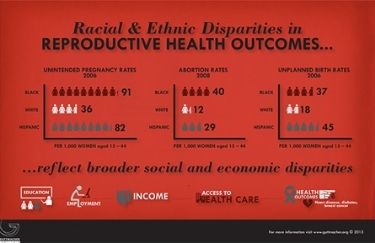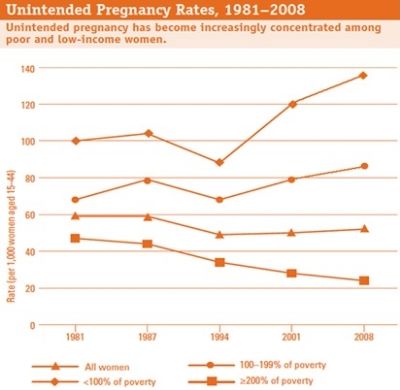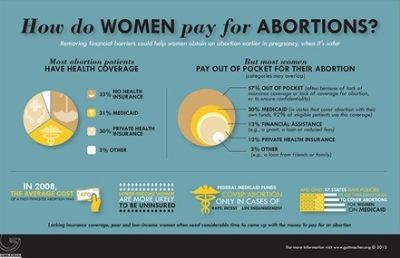(10 am. – promoted by ek hornbeck)
We are coming up to the 41st anniversary of Roe vs Wade and Doe vs Bolton. A couple of days ago, I received an email from the Center for Reproductive Rights entitled “Victory in North Carolina” saying that a federal judge (Catherine Eagles) struck down the North Carolina law forcing physicians to give an intravaginal ultrasound and discuss it with patients seeking an abortion (see for further discussion: http://www.csmonitor.com/USA/2014/0118/North-Carolina-forced-ultrasound-law-struck-down-on-First-Amendment-grounds). This was seen as a victory. In the most obvious and narrow definition of the word, i.e., the defeat of the bill, it was a victory. However, the fact that we are facing increasing attacks on the ability of accessing a constitutional right 41 years after its being granted cannot be seen as a victory, it is demonstrable proof that patriarchy is still extremely powerful and has no intention of giving up the fight to control women’s bodies. Essentially, we are fighting a defensive struggle against an ideological perspective of divide and rule called patriarchy which can bring religion, power, and money to maintain male hegemony in the societies in which we live. That does not mean that all men are our enemies, we have many male allies in this struggle; but we need to recognise that this ideological perspective still exists and is not going to go quietly into the night. It also means that in order to address women’s liberation truly, we cannot concentrate on issues, but rather the general issue that is at stake.
Abortion rights must be addressed in the context of the general struggle for women’s liberation containing both the oppression of race and gender and class exploitation. That is the struggle that affects the majority of women worldwide. This is not to say that everyone must address every issue, but we must always keep the general picture in mind when we struggle on separate issues. Struggling to maintain Roe v Wade is necessary, but it is insufficient given the Hyde Amendment. Struggling for reproductive rights without recognising the general oppression of women means that that the issues that affect the majority of women remain in place. Non-recognition of the different histories of women of colour due to colonialism and racism means again that the voices of all women will be ignored.
Thanks to Elise Hendrick for comments on an earlier draft!

Access to abortion remains a contentious issue and women all around the world are still struggling to get or to maintain this access. However, this struggle is only part of a larger issue which relates to the ability of women to determine if, when, and how many children they want to have. The issue is one not only about abortion but our reproductive rights in general and, essentially, control over our bodies. This is an issue that remains a fundamental part of patriarchal control over women and relates to control over property and inheritance over property and quite obviously to our roles in the societies in which we live.
Roe, Doe, Hyde, Casey and Gonzalez
Many people have heard of the Roe vs Wade decision by the US Supreme Court in 1973. Few outside the US understand that the impact of that decision, together with another case the same year, Doe vs Bolton, was to give a negative right to abortion; i.e., you legally have the right, but the state does not have to facilitate your access.
Roe vs Wade affirmed that a women’s right to an abortion is not absolute. Beyond the first trimester of pregnancy the state had more interests with considerations relating to maternal life and to viability of the foetus. Roe was a weak decision and has been steadily undermined since 1973.
The Hyde Amendment was passed by the US Congress in 1976. This Amendment is specifically targeted at poor women by making clear that federal funding will only be available for abortion services in very restricted circumstances – otherwise women have to pay.
The Hyde amendment prevents direct federal funding for abortion except in three specific cases: 1) the life of the mother; 2) rape; and 3) incest. Otherwise the decision is left to the states as to whether Medicaid funds can be used to cover abortions for poor women. This means there is wide variation between states. Abortion access must be formally permitted and available, but funding is dependent upon state laws themselves.
The Hyde Amendment inspired the passage of other provisions extending the ban on funding of abortions to a number of other federal health care programs. Consequently, except in the cases of rape, incest and the life of the mother, those federal government employees who need abortions must pay for them “out-of-pocket” rather than them being funded as part of general health care. Abortion services are not provided for U.S. military personnel (finally reversed in 2013 due to Jeanne Shaheen’s amendment to the National Defense Authorization Act and their families, Peace Corps volunteers, Indian Health Service clients , or federal prisoners unless their case falls under the purview of the Hyde Amendment’s exceptions.
The Hyde Amendment is not a permanent piece of legislation; but is passed as a rider to annual Federal appropriation bills specifically tied to Health and Human services affecting disbursement of Medicaid to the states.
Further restrictions to Roe were placed in 1992 in the Planned Parenthood vs Casey decision where a Pennsylvania law was examined by the Supreme Court. The provisions under consideration were:
• The informed consent rule under the Act required doctors to inform women about detriments to health in abortion procedures.
• The spousal notice rule required women to give prior notice to their husbands.
• The parental notification and consent rule required minors to receive consent from a parent or guardian prior to an abortion.
• The fourth provision imposed a 24-hour hold before obtaining an abortion.
• The fifth provision challenged in the case was the imposition of certain reporting mandates on facilities providing abortion services.
The plurality decision addressed the issue of foetal viability where it could come into conflict with the rights of the mother, specifically viability at 22-23 weeks as opposed to 28 weeks at the time of Roe where viability of the foetus could be used as a restriction by states. Moreover, the use of standard of “undue burden” placed (defined legally: “the purpose or effect of placing a substantial obstacle in the path of a woman seeking an abortion of a nonviable fetus.”) upon the women rather than the legal standard of strict scrutiny was used to strike down the spousal notification, but upheld the 24 hour waiting period, informed consent, and parental consent provisions of the Pennsylvania law.
Finally, there is Gonzalez v Carhart (2007) in which the Supreme Court upheld the political decisions of Congress over the medical expertise of physicians in determining that a partial birth ban was never needed irrespective of the health of the woman. It also allowed for state intervention on the basis of ethical and moral considerations overriding the primary importance and safety of women’s life and health women’s life and health, placing an additional point to restrictions beyond the viability of the foetus. The abolition of the health exception requirement (which literally every abortion case since Roe had upheld in one way or another) must be emphasised. The health exception requirement was one of the central aspects of the Roe decision and as such the decision rejected a basic provision of earlier jurisprudence and replaced it with something that does not take a women’s health as a central plank for restricting procedures.
The attempts to redefine rape by several Republicans running for office during the last general election were not only attempts to normalise misogyny; it aims at further limiting federal funding of abortions for women that were raped. The fact that these men were defeated at the ballot box is important (100% of those voting did not reject them unfortunately), but the attempted normalisation of rape discourse constitutes a threat to women which may have long-lasting consequences. The fact that these men did not consider what they were saying to be abhorrent is telling and there is a danger that this discourse is picked up as a narrative by a right-wing misogynist media.
Compliance with Roe vs Wade by a state enables access to federal money giving access to general health care for the poor through Medicaid; non-compliance endangers a state’s receipt of Medicaid money undermining access to general health care.
The 41st anniversary of Roe v Wade and Doe v Bolton comes at a time when access to abortion has been facing continued attack. Various types of interference have been introduced by states. The Guttmacher Institute has aggregated these into several categories:
1) Refusal Laws: 46 states allow individual health care providers to refuse to participate in abortions; 43 states allow institutions to refuse to perform abortions, 16 of which limit refusal to private or religious institutions. Private hospitals are often owned by religious denominations and in some areas they are the only available hospital provision forcing women to travel to obtain an abortion.
2) Medicaid funding for abortions: 17 states use their own funds to pay for all or most medically necessary abortions for Medicaid enrollees in the state. 32 states and the District of Columbia prohibit the use of state funds except in those cases specified by the Hyde Amendment. In defiance of federal requirements, South Dakota limits funding to cases of life endangerment only (http://www.guttmacher.org/statecenter/spibs/spib_SFAM.pdf).
3) Term limits to abortion: 41 states prohibit abortions except to protect the life of the women or her health after “fetal viability” (22-24 weeks) (http://www.nytimes.com/interactive/2013/06/18/us/politics/abortion-restrictions.html?_r=1&);
4) Physician and Hospital requirements: 39 states require abortion to be performed by licensed physician; 20 require abortions to be performed in a hospital after a specified point in a pregnancy, 18 states require the involvement of a second physician after a certain point;
5) Late-term Abortions: prevention of certain procedures for late term abortions making them more dangerous (19 states have laws prohibiting “partial-birth” abortions;
6) Parental Involvement for Minors: 38 states require some type of parental involvement in a minor’s decision to have an abortion; 22 states require one or both parents to consent to the procedure, while 12 require that one or both parents be notified and 4 states require both parental notification and consent;
7) Unnecessary testing: e.g., invasive vaginal sonograms
8) Inaccurate Information Provision: Inaccurate information has to be given to pregnant women [e.g., links between abortion and breast cancer (5 states); fetal pain (12 states) and long-term mental health consequences of abortion (8 states)];
9) Waiting Periods: 26 states require woman seeking abortion to wait a specified period of time, usually 24 hours, between receiving ‘counselling’ (see inaccurate information above) and the procedure. 9 of these states have laws effectively requiring woman to make two separate trips to the clinic to obtain the procedure. In many states, abortion provision is limited (e.g., Mississippi and South Dakota have only one clinic in the whole state) and will require travel expenses and someone to stay overnight for a procedure, adding additional expense for women forced to pay for terminations.
10) Private Insurance Coverage: 8 states restrict coverage of abortion by private insurance plans, most often limiting coverage only to when the woman’s life would be endangered if the pregnancy were carried to term. Most states allow the purchase of additional abortion coverage at an additional cost.
Unintended Pregnancy and Abortion
Statistics are always useful and in this case reflect many things, specifically access to health care, ability to pay for prescriptions, education levels, access to birth control itself, social and religious constraints, all of which is closely tied into wealth and income level. In the context of the US where health care is privatised and where many benefits (e.g., maternity, childcare) depends on employment (and employer), access to birth control has clearly been compromised. Hopefully, the ACA will enable increased access both to health care and birth control (Guttmacher is arguing that it is), but as Tpau pointed out, junk insurance still exists which will affect women accessing health care, the cave-in on accessing abortion rights with insurance through extending the Hyde Amendment to ACA, and the dangers of conscientious objector to religious groups on birth control provision has impacted on the positives that could have been obtained with the passage of a general health care package in the US.
“• Unintended pregnancy rates are highest among poor and low-income women, women aged 18-24, cohabiting women and minority women.
• The rate of unintended pregnancy among poor women (those with incomes at or below the federal poverty level) in 2008 was 137 per 1,000 women aged 15-44, more than five times the rate among women at the highest income level (26 per 1,000). [6]
• Poor women’s high rate of unintended pregnancy results in their also having high rates of both abortions (52 per 1,000) and unplanned births (70 per 1,000). In 2008, poor women had an unintended birth rate nearly six times as high as that of higher-income women (at or above 200% of poverty.)
• In 2008, black women had the highest unintended pregnancy rate of any racial or ethnic groups. At 92 per 1,000 women aged 15-44, it was more than double that of non-Hispanic white women (38 per 1,000).
• In 2008, women without a high school degree had the highest unintended pregnancy rate among all educational levels (101 per 1,000 women aged 15-44), and rates were lower for women with more years of education.
• Some groups-including higher-income women, white women, college graduates and married women-are comparatively successful at timing and spacing their pregnancies. For example, higher-income white women experience unintended pregnancy at less than half the national rate (20 vs. 54 per 1,000). (http://www.guttmacher.org/pubs/FB-Unintended-Pregnancy-US.html)”

There is wide variation between women according to race and class on incidences of unwanted pregnancies and as expected, poor women, women of colour, those with low levels of education have higher rates of unintended pregnancies indicating lack of access to health care, birth control, education and income limit women’s choices. Unsurprisingly, wealth and income, access to health care, education, religious beliefs, and let’s face it better prospects in the context of US capitalism have an impact not only on women choices, but their own perceptions of their choices.

(Guttmacher Institute: http://www.guttmacher.org/pubs/fb_induced_abortion.html#18)
Incidence of Abortion
• More than half of pregnancies among American women are unintended, and about four in 10 of these are terminated by abortion.[1,2] Twenty-two percent of all pregnancies (excluding miscarriages) end in abortion.[2]
• Forty-two percent of pregnancies among white women, 69% among blacks and 56% among Hispanics are unintended.[1]
• In 2008, 1.21 million abortions were performed, down from 1.31 million in 2000. However, between 2005 and 2008, the long-term decline in abortions stalled. From 1973 through 2008, nearly 50 million legal abortions occurred.[2]
• Each year, two percent of women aged 15-44 have an abortion. Half have had at least one previous abortion.[2,3]
• At least half of American women will experience an unintended pregnancy by age 45, and, at current rates, one in 10 women will have an abortion by age 20, one in four by age 30 and three in 10 by age 45. (http://www.guttmacher.org/pubs/FB-Unintended-Pregnancy-US.html)

The issue of Reproductive Rights
While this piece is primarily addressing access to abortion, the issue should be correctly seen in the context of women and their reproductive rights. Because of the fact that our bodies are required for gestation of the next generation and that only women (currently) can fulfil this role, control over our reproduction has been impacted by the perceived needs, ideologies, and prejudices of societies in which we live. While in most countries we are no longer property to be traded and sold, that does not mean that we have complete control over decisions that centrally affect us and our lives.
The access to education, health care, birth control (choices of various forms depending upon women’s perceived needs) and the means to determine if, when and how many children we want are fundamental issues for women around the world. So this is an issue that not only relates to the decision when you do not want to have children; the other side of the coin is the individual’s ability to determine the number of children they decide to have in the context of a society in which the ability to have and raise children depends both on your income, access to health care and/or access to a social welfare state that actually provides for childcare, education, housing and food.
Historically and currently, these decisions are not determined by the individual, but rather by the society, the culture, religious and political authorities.
The realities of race and class have impacted upon access to reproductive rights substantially both historically and currently. For poor women and for women of colour, the issues are historically different. The linkage between the birth control movement with eugenics movement in the first wave of feminism led to forced sterilisation of poor women and women of colour; wealthier white women were desperate to access voluntary sterilisation which required their husband’s approval to obtain. Just the issue of access to birth control became contentious; making it legal doesn’t ensure accessibility and choice of what type of birth control is available due to costs of the medications and birth control, ability to see a doctor (some types require a doctor not only to prescribe but to place), the choice of short-term versus long-term acting birth controls and then, of course, religious constraints to choice.

Social Reproduction
Overwhelmingly, women are still primary caretakers of children, the sick and infirm and the elderly in our societies. Our responsibility for rearing the next generation and taking care of extended families clearly impacts upon our working lives and our economic independence.
The insufficiency of public support for social reproduction means that inevitably women are trapped in low-paying and part-time jobs as they need to care for children and the infirm and elder members of society. Many of the jobs we do still fall under the designation of “women’s work” which is undervalued even though extremely necessary to society. Combined with job segregation where even if our jobs require the same skills set as jobs designated as male jobs, we are paid less for doing the same work. Responsibility for social reproduction means that we have less continuous job histories, which means that even when we are legally required to earn the same salary for the same job, taking time off to have children and take care of the sick and elderly means that we are lower on the job ladder. Add to this the issue of concentration of wealth in the hands of men (and even more so in the hands of white men) means that women are essentially poorer, more dependent, and trapped in these circumstances in the context of a capitalist economic system.
This is an extremely relevant issue to any discussion of reproductive rights as we need to understand that our choices whether we want children, how many and when we choose to have them are constrained and also constrain other choices. Discussions of the role of women in our societies are not independent of race and class, they are not independent of our abilities to care for children, they are not independent of the perceived and real rights of women, and they are not independent of our reproductive choices.
Where are we?
I am not seeing the last gasp of patriarchy here. I am seeing attempts at retrenchment; I feel like we are continually fighting the same battles over and over again. Perhaps standing outside a women’s centre which provides abortions in London while people prayed outside is making me feel this way. Perhaps, it is the wide ranging legal restrictions to access what is essentially a negative right lies behind my despair. The extension of access to abortion for women in the military that have been raped is a plus. But it feels like something that should have been done a while ago and in the absence of the Hyde Amendment dictates. However, it feels to me like we are fighting a rearguard action against reactionary forces far more powerful and wealthier than us.

Blatant attempts to redefine rape in the context of a general election. Attacks on our reproductive rights. This is not only happening in the US. In the Spanish state, there is a bill that will attempt to undermine an already week guarantee of “free abortion” up to 14 weeks without justification and up to 22 weeks in the case of foetal malformation. The new bill will reduce access to abortion to the case of rape (which must be reported to the police in order to be recognised and only in the first 12 weeks) and the life of the mother (up to 22 weeks).
Feminists in Europe are protesting in solidarity but there are worries of more attacks on our reproductive rights in other countries. In the British government there are anti-choice politicians in positions of power and as I said above, the prayers in front of abortion providers has started.

One of the most important things in guaranteeing access to birth control, health care and reproductive rights lies in the public nature of a health care system which everyone can access. That works very well if there is no or limited political interference in the health care system itself and decisions left up to a women and her doctor. However, political interference may leave us vulnerable as well; so it is a double-edged sword. The health care system cannot provide what the political system prohibits.
The attacks on the social welfare state and on the public sector which impact far more on women also strongly impact our choices not only to ensure coverage for our children, care for the sick and infirm and elderly; with more women than men working in the state sector as many of our traditional roles have been socialised, there is no doubt that we will have to pick up the slack when the state no longer provides provision. We are losing jobs, incomes, and benefits that helped pick up the slack and the vast majority of women cannot afford to obtain care if they need to pay for it.
We need a women’s movement not under the control of the great and good, but one that hears and listens to the voices of all women, that struggles for all women to eliminate (whatever we can) of what remains of patriarchy that exists in the context of capitalism. We can make reforms in the context of capitalism and these reforms are important. But since so much of women’s oppression derives from the existence of private property, I do not think we can eliminate it completely. We need to eliminate private property to do that. However, if we do not fight now, if we do not educate people now, the promises of socialism will be hollow. We are members of our societies with all its prejudices, all its ideologies; we must be working now to fight against these things or they will simply be reproduced in any future system we build.

